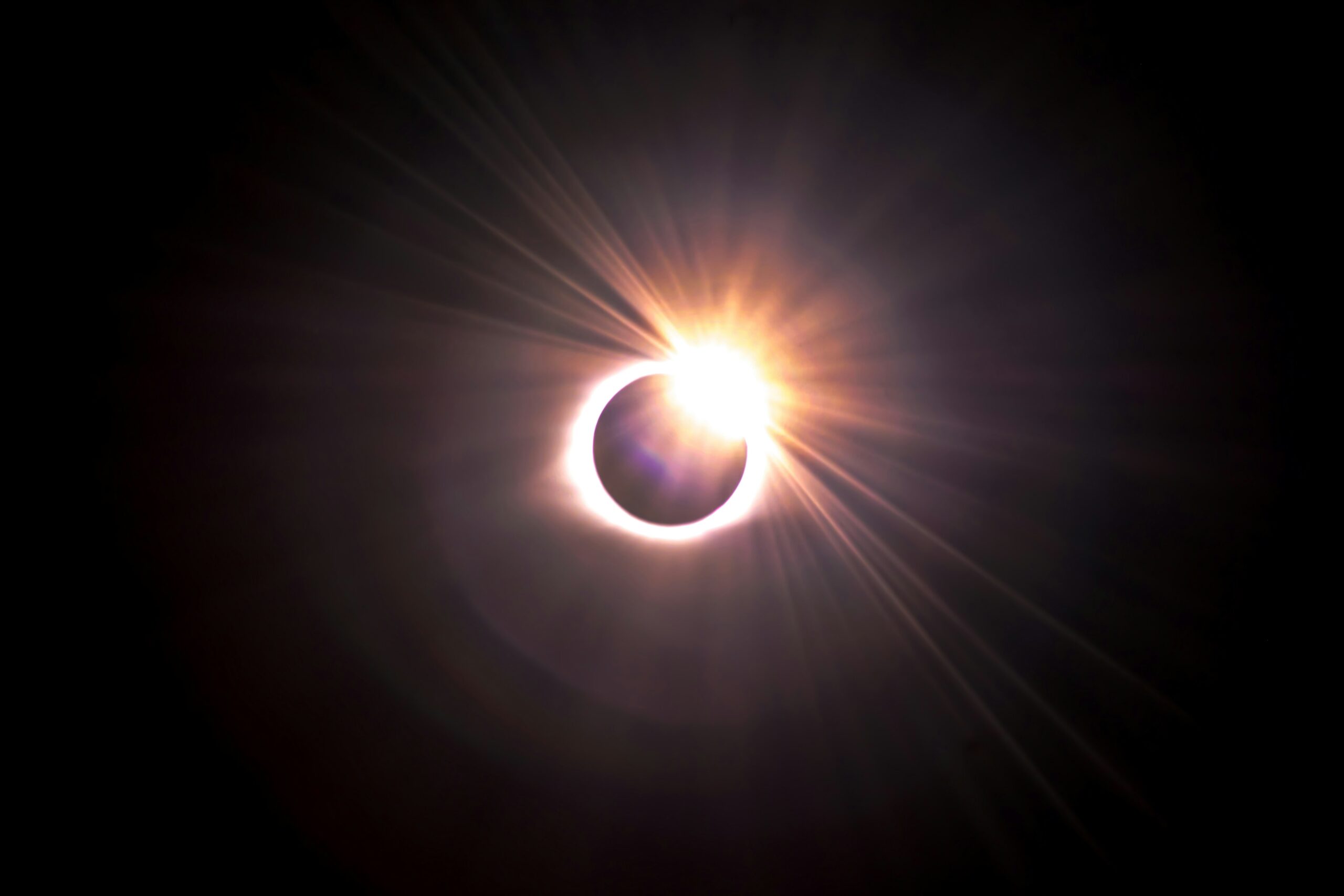On April 8th, 2024, in many areas of North America, there will be a solar eclipse. Roughly 31.6 million people live in the path of totality, and according to NASA, every contiguous state in the U.S., in addition to parts of Alaska and Hawaii, will witness anywhere from a partial to a total eclipse.
The eclipse is a wondrous, once-in-a-lifetime opportunity for you and your family to witness; it serves as a great opportunity to teach your children about outer space! However, witnessing the solar eclipse comes with some caution. Before you step outside and prepare to watch the show, take the following tips into account to make sure you and your loved ones are safe.
Where will the solar eclipse be visible?
The solar eclipse will cross over North America on April 8th, but only some parts will be able to see the eclipse fully. Around the Kansas City Area, it’s said that the moon will cover about 90% of the sun by 2pm. You can check the exact time the eclipse begins and ends on TimeandDate.com.
Solar eclipses can be dangerous for your eyes
Looking at the sun directly is a no-go, but a solar eclipse is a unique event where many people may feel compelled to look directly into the sky without any protection. A true and total solar eclipse only lasts a few seconds! Once the sun returns into view, just staring at it for a few seconds can permanently damage your retina. The retina has no pain receptors and you may not even notice any damage for a few hours. Retinal burns from the sun are called solar retinopathy, and damage can be either temporary or permanent. Symptoms include loss of vision, altered color vision, and distorted vision.
Unfortunately, there is really no treatment to restore lost vision from staring at the sun. Children may be more at risk than adults, as their eyes tend to transmit more light to the retina than adult eyes. As a result, this may mean their eyes are easily damaged by intense light (like that from a solar eclipse).
Here are our main tips for witnessing a near-total solar eclipse:
- Be sure to wear special glasses or research ways to witness the eclipse without looking directly at it. NASA has some great tips on their website for homemade eclipse-viewing theatres. Going the homemade route can be a great way to entertain the kids, too.
- Before heading outside, apply sunscreen with high SPF. If you plan to stay out for a while, make sure to reapply it every few hours.
- Consider wearing a hat that conceals your ears, face, head, and neck. Wide-brimmed hats do the job best, and a visor is fine for an overcast day.
- Bring plenty of water to sip on while you watch the show. Again, if you plan to spend a lot of time outdoors during eclipse time, practice proper outdoor safety etiquette and wear protective clothing or seek shade where possible.
Methods to view an eclipse
There are ways to look at the solar eclipse indirectly. You can, of course, watch livestreams online or on TV. You can also try any of the following:
Eclipse sunglasses
You can purchase eclipse sunglasses online. Make sure that eclipse sunglasses are fitted properly, used correctly, in decent condition, and free of any defects. Make sure to put them on before you look towards the eclipse, and turn away before you take them off. Always closely supervise any children using these types of glasses.
It’s also a good idea not to use eclipse sunglasses in combination with other lenses, such cameras, telescopes, binoculars, etc., as these will create more light intensity that the glasses aren’t equipped to handle.
Pinhole projections
You can create a pinhole protection through which to see the solar eclipse. Use a small piece of paper or a card with a single ~1mm diameter hole in its center to create a shadow on an additional screen or card about ~1m away. Make sure to not view the eclipse directly using this method and face away, only observing the event as the image is projected onto the screen/card.
With any method, children are always most at risk, so ensure that they are closely supervised. If you’re unsure if your child is willing to follow instructions or might be unable to use any outdoor viewing methods, consider watching a live stream online or on a TV.























